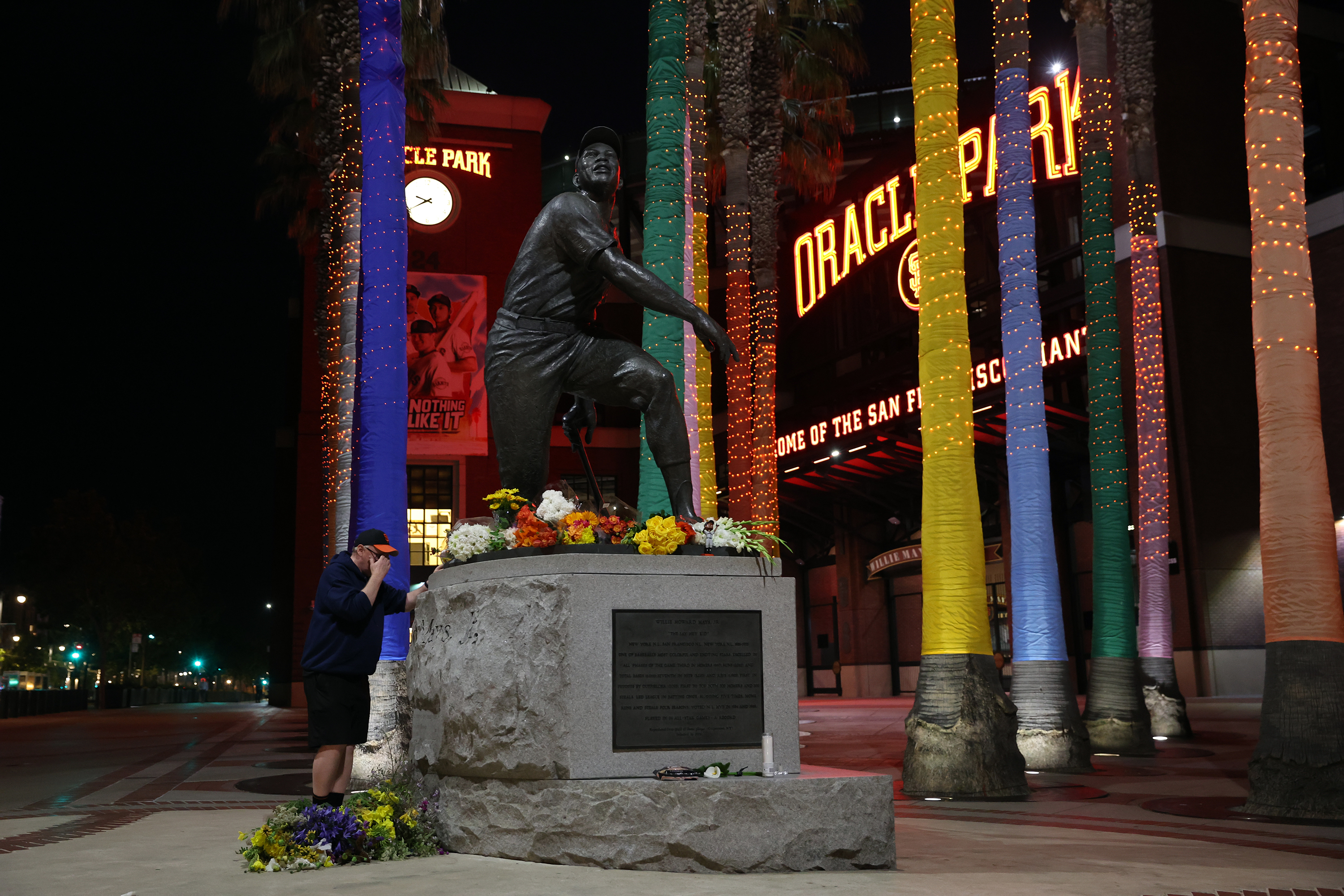A stream of people visited the Willie Mays statue outside Oracle Park in San Francisco Wednesday to pay their respects to the baseball legend a day after his death.
People left flowers, snapped pictures and chatted with others about the late Hall of Famer. While mourning his loss, they also celebrated his legacy.
For fans of the Giants, seeing Mays anytime was a special treat that left a lasting impression.
"I went to the 2007 All-Star Game as a 6-year-old and got to see him in person when he was carted around the field," Max Callan said. "I re-watched that whole game recently on YouTube."
For San Francisco native Robert Martinez, Mays was one of the first famous people he ever met. He was on a school field trip at Candlestick Park.
"They fed us lunch and they gave us a program guide and they said you're gonna meet some current players and some former players," Martinez said. "And Willie Mays was there."
Martinez said Mays signed his program guide twice.
Across his 93 years, Mays lived through a pivotal time in San Francisco history, baseball history and American history.
As one of the first players to transition from the Negro leagues into the major leagues, Mays became an immediate standout for the New York Giants.
Get a weekly recap of the latest San Francisco Bay Area housing news. Sign up for NBC Bay Area’s Housing Deconstructed newsletter.
That's where he earned the nickname the "Say Hey Kid." Mays had said it was because he often couldn't remember so many new names as a Giants rookie so he'd say "Hey."
His athleticism, professionalism and standout personality left an impression on a generation of fans who started watching baseball as television became more common across the country and around the world.
When the Giants moved to San Francisco in 1958, he was an integral part of the franchise, even if San Francisco didn't immediately warm up to him.
"Profound figure, his skill set, and to endure all the racism that he endured in this city," Omar Moore said. "People forget that for the first four or five years, a lot of white San Francisco Giants fans actually booed him."
Moore, who grew up in London, said Mays was an important figure to him because of his perseverance.
When San Francisco did eventually embrace the star player, the feeling was mutual. Mays played 15 years for the San Francisco Giants and spent the rest of his life after baseball in the area.



